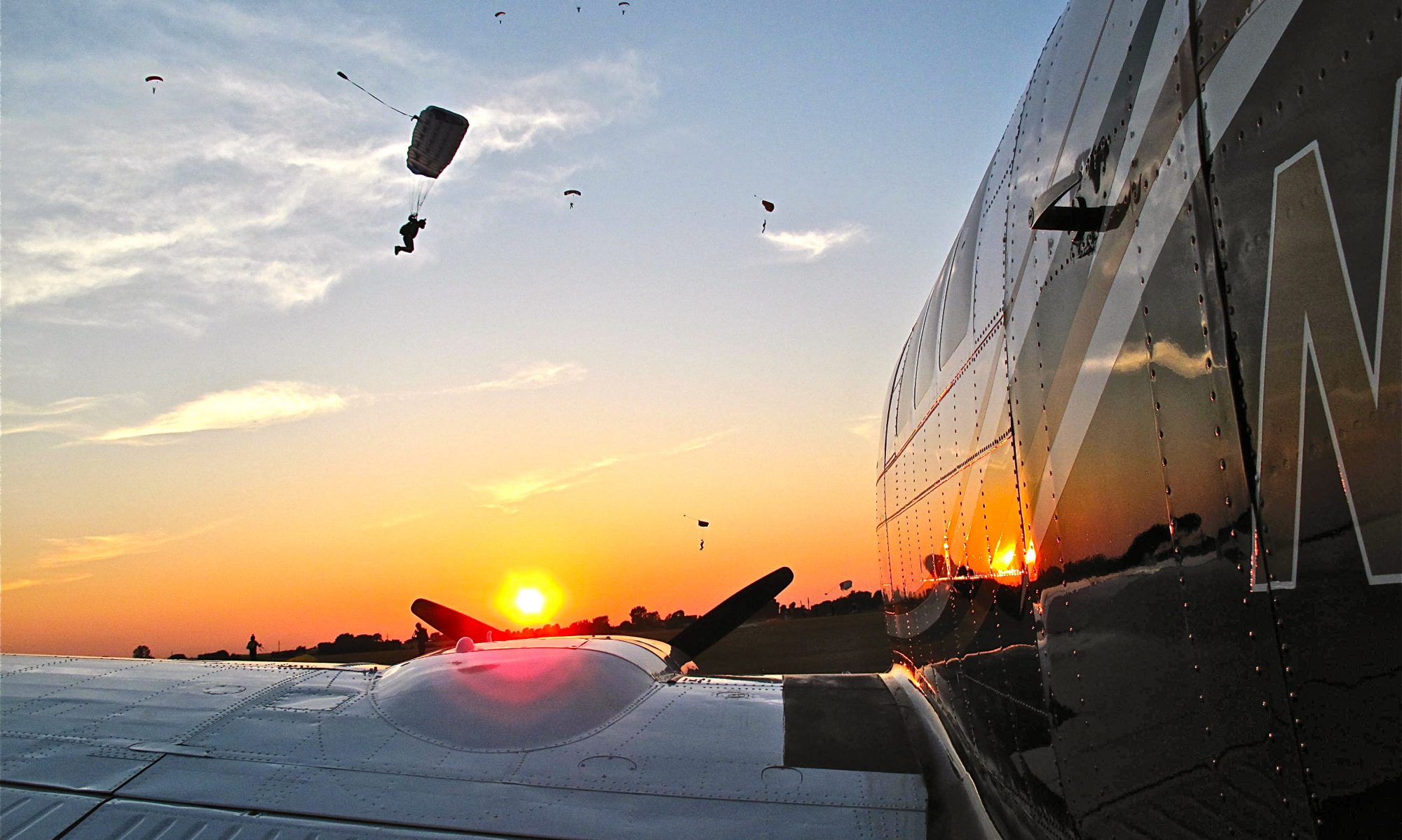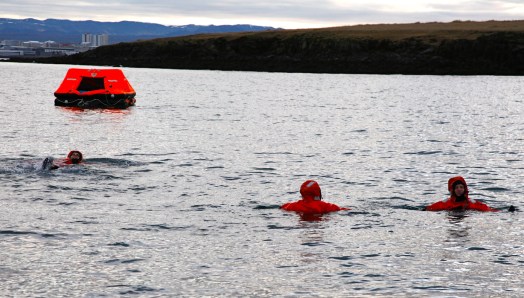A long time ago, on an island far far away, I opened a small skydiving operation on the beautiful Caribbean paradise that is known as St. Croix USVI. It was a great adventure if not a lucrative one. We jumped, we dove, we drank on the beach. We did just about everything but make plane loads of money. Oh well, you can’t have everything. It also led to on of my favorite stories, the rescue of the Stormion’ Normin.
THE RESCUE OF THE STORMIN’ NORMIN
Never fly in the cockpit with someone braver than you.
By 1997 things had started to slow down in the ferry flying business and I was only making two or three trips a year. Three years after the mid-air collision, the St. Croix Valley skydiving club broke up. A married couple bought most of the parachute equipment and opened up operations in Hutchinson Minnesota. At that time I decided that it was my opportunity to start a business supplying aircraft to this new drop zone. I borrowed some money from my grandmother, bought a Cessna 182 jump plane, and Skerry Air was born.
Skerry Air was an all encompassing aviation company that included aircraft leasing, skydiving instruction, and pilot services. Within three years I had a fleet of four Cessna jump planes and was actually making some sort of a living. Despite having a full time job and raising our two kids, Cathy took over management of the business, leaving me to do all the fun stuff. I definitely got the better end of that deal.
One day I was hanging around the drop zone talking with John, a fellow instructor, when one of the pilots told us that his mother had a condo on the island of St. Croix. I don’t remember whose idea it was to start doing tandems down there but before I knew it we’d hatched a plan to start a small skydiving business on the island. Pushing tourists out of planes and landing them on the beach sounded like tons of fun. What could be better than spending all day skydiving and flying over beautiful turquoise water and all night drinking rum on the beach.
Because both John and I were full time skydivers, and had wives with real jobs, opening a winter skydiving operation seemed like the perfect gig. Jump in Minnesota during the summer and in the Caribbean in the winter. Who could possibly find fault with that plan? It turns out our wives could. Being the classic naive and clueless husbands we thought that our better halves would have no problem with our plan to spend the winter in paradise while they held down the fort with the kids and the cold weather. They weren’t super excited but somehow, unbelievably, they let us go.
So we loaded up one of my jump planes, a Cessna 182, with all the skydiving gear needed to run the operation and headed south to seek fame and fortune. We didn’t expect either but we were pretty sure we were going to have good time.
We set up shop at the St. Croix International airport in what was essentially a large closet in the corner of a large maintenance hangar. This tiny room became not only our office but our dorm room as well. John and I bought a couple of folding beds to sleep on that we could move out of the way during business hours. It was all very professional-ish.
The skydiving business on St. Croix was so-so, at best. John and I handed out flyers, we made deals with all the local bars to advertise for us, we had stickers made and placed brochures in all the hotels. Nothing worked. It turned out that the cruise ships, that we’d hoped would provide most of our customers, rarely spent the night there. That meant that the tourists didn’t usually have the time it took to go skydiving. We did make enough money to keep the doors open by taking the locals and ex-pats for jumps over the beach. The Americans who moved to the island were especially glad to see us. It turns out you can only relax on the beach for so long before yearning for a little excitement to break up the monotony of paradise.
I loved island life. John and I traded a couple of jumps for scuba diving lessons. After that whenever we weren’t going up, we were going down. We also got to know a bunch of the locals who hung out at the beach bar each night watching the sun set. It was heaven.
It didn’t take long for things to fall into a routine. Make a few jumps in the morning or early afternoon. Then a quick scuba dive before drinks on the beach with the laid-back club. I was starting to think that I could really get used to a life like that. It had been literally months since someone had asked me to risk my life flying in some hunk of junk over the ocean. So of course that had to change.
One day a man drove up to our office and asked John and me if we were the skydiving guys. We admitted as such and he introduced himself and said that he needed our help with a rescue. Now skydivers are not often asked to rescue anybody, so I was intrigued. I mean, what could we do? I suppose if his cat was stuck in the top of a tall palm tree I could land on it. But aside from that I was at a loss. His name was Cory and he told us he was the owner of a long line fishing boat that had become disabled out in the middle if the Caribbean Sea. The ships name was The Stormin’ Normin, and it had lost all power when its main fuel pump gave up the ghost, stranding them hundreds of miles from land. He said that the boat was in international waters so the US. Coast Guard wasn’t responsible and none of the South American countries were interested in helping either. The fix was simple, install a new fuel pump. The problem was that not only was the Stormin’ Normin stranded, it was stranded smack dab in the middle of the Caribbean Sea, about as far from land as you can get.
So why was the owner of a disabled fishing boat approaching a couple of skydivers? Because we had a plane that you could drop things from, like people, or, in this case, a fuel pump. While John and I stood there in the parking lot with our arms crossed Cory proceeded to tell us his big plan.
Cory’s plan was simple. We’d hop in my jump plane, fly out to the Stormin’ Normin, and drop the replacement fuel pump to the crew. Easy peasy. Cory even came prepared; he opened the back door of his car and pulled out an oblong Styrofoam shell about twice the size of a football. It was spray painted bright orange and had 50 feet of nylon rope attached to one end; presumably to make it easier to grab once it was in the water. He even had a second dummy styrobomb made up so we could do a practice bombing run before dropping the real thing. Cory had apparently put some thought and effort into his plan. It all seemed simple enough.
Right. Just fly 300 miles out to the middle of the Caribbean Sea, find a tiny fishing boat in the middle of the ocean, drop down to an unsafe altitude, and bomb it with a fuel pump. Simple. Of course, when you’re out in the middle of the ocean, the very last place you want to be is down low. Because if anything goes wrong you’re in the water before you know it. Not enough time to prepare, and not enough time to call for help. Yep, the whole plan was pretty dangerous and stupid. So of course I said yes. I mean, how often do you get to risk your life for complete strangers for little reward and no benefit to yourself? OK, all the time if you’re me but that’s beside the point.
To his credit the owner’s plan for dropping the pump wasn’t half bad. With the long nylon rope trailing behind the styrobomb there was a good chance that some part of the package would land within swimming distance of the Stormin’ Normin’s crew. And if I got lucky the rope might actually end up draped over the deck of the ship and no one would have to get wet or eaten by a Kraken or something. One thing we had going for us was that we wouldn’t be relying solely on luck because I’d done this before. Well, not this exactly, but close enough. You see I’m a Pumpkin Toss pilot.
Every Halloween the skydivers in western Wisconsin get together to jump out of planes, drink vast quantities of beer and bomb cars with pumpkins. Really. Leave it to skydivers to think that jumping out of airplanes isn’t exciting enough. What happens at P-toss is we put a derelict car in the parachute landing area and the skydivers toss pumpkins out of planes and try to hit the car. Good fun. Of course jumpers being jumpers, there’s usually a bunch of drunks standing on the car as it’s being bombed. Wouldn’t want things to get boring would you? It’s not as dangerous as it sounds because from 500 feet hitting a car with a pumpkin is hard. OK, standing on the car while it’s being bombed with pumpkins is dangerous, but that’s what makes it fun. Anyway, I’d done this sort of thing before.



















